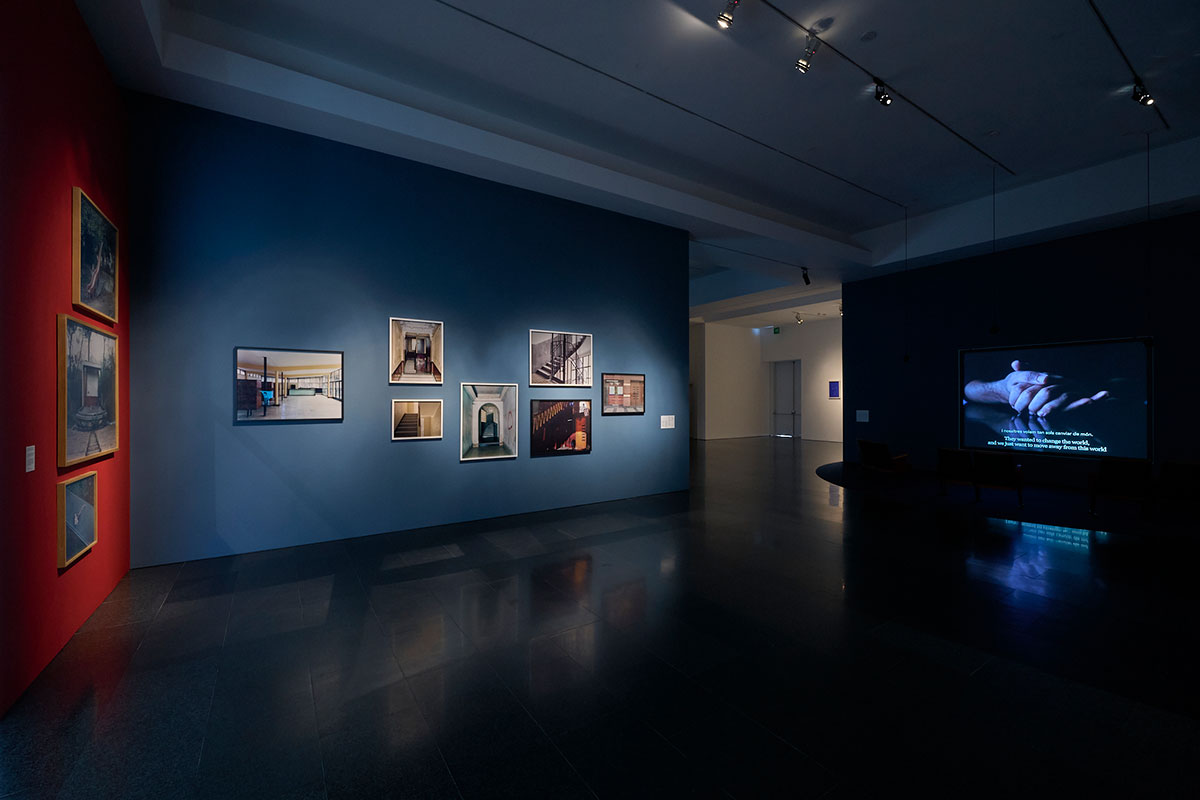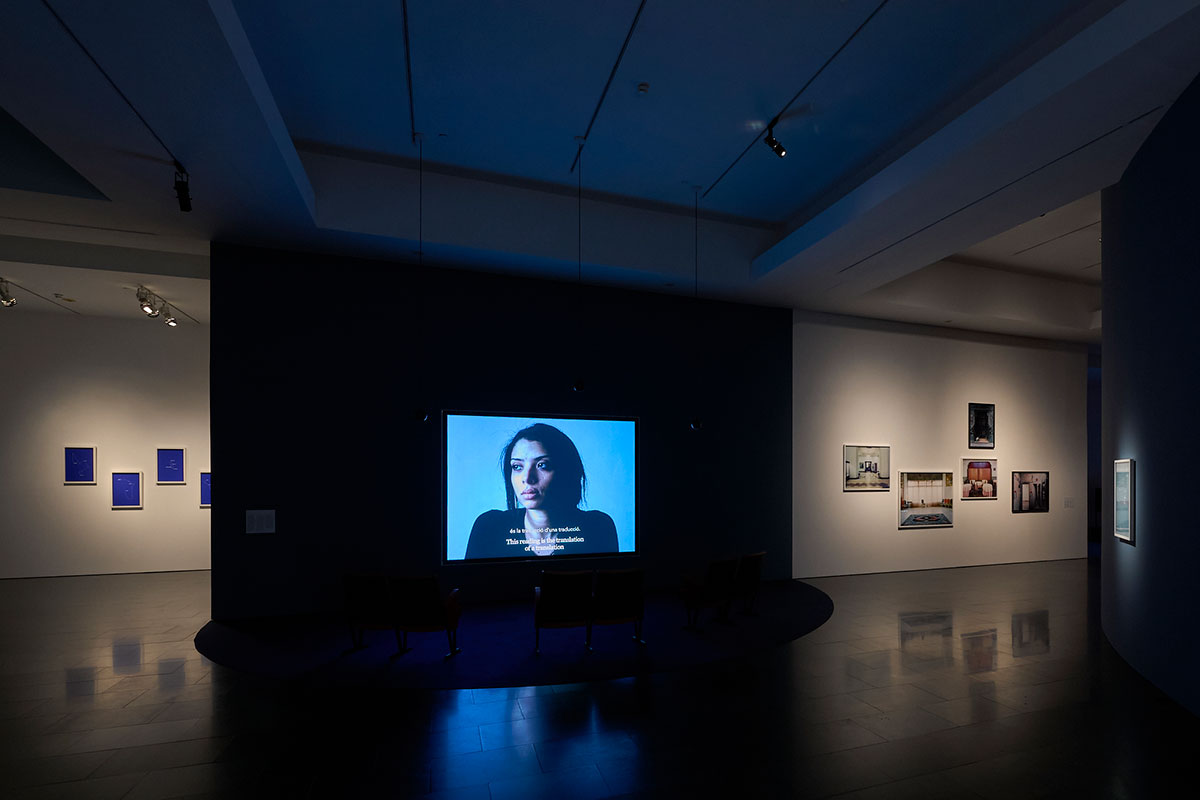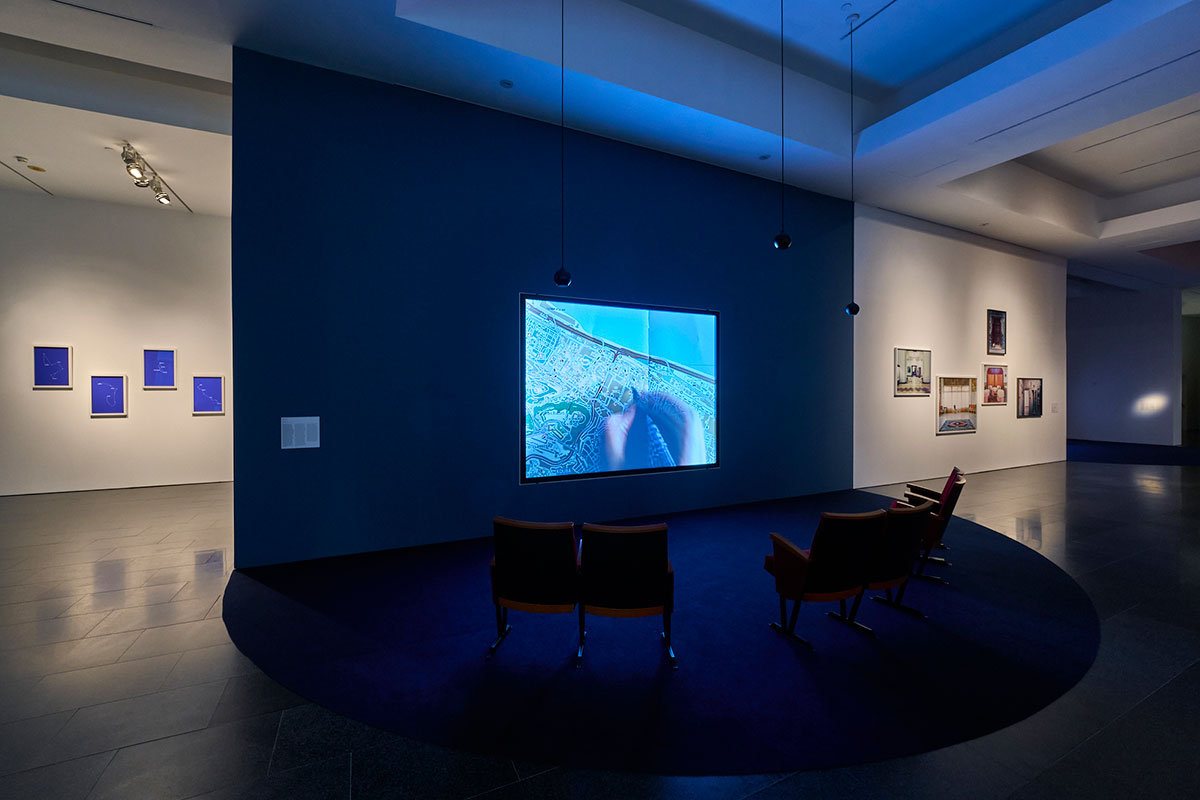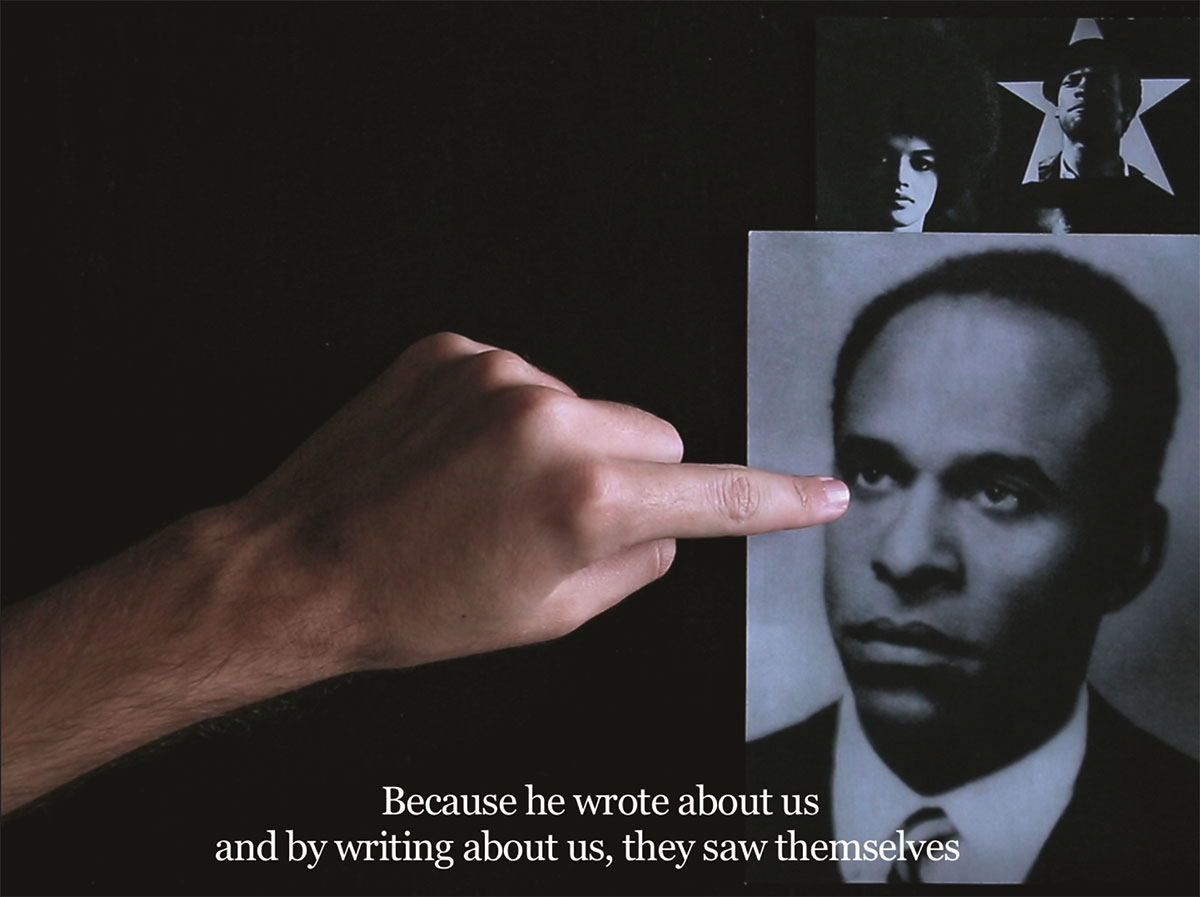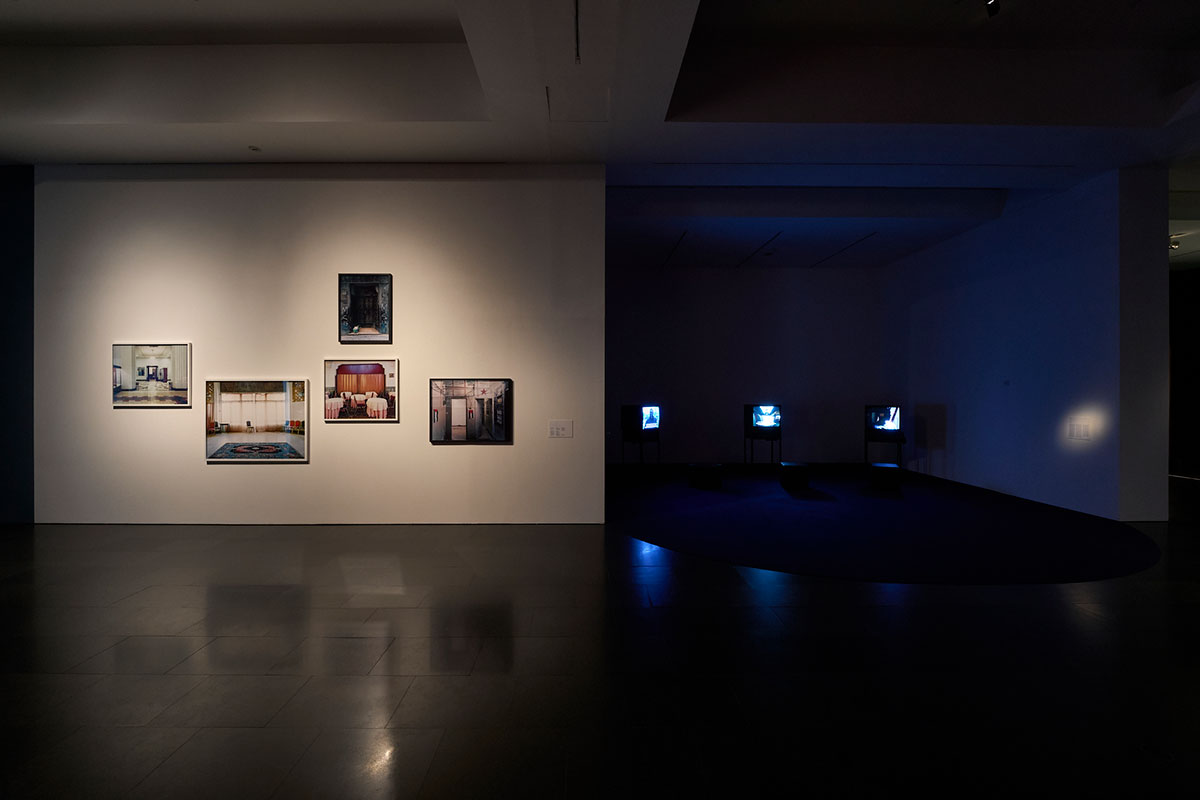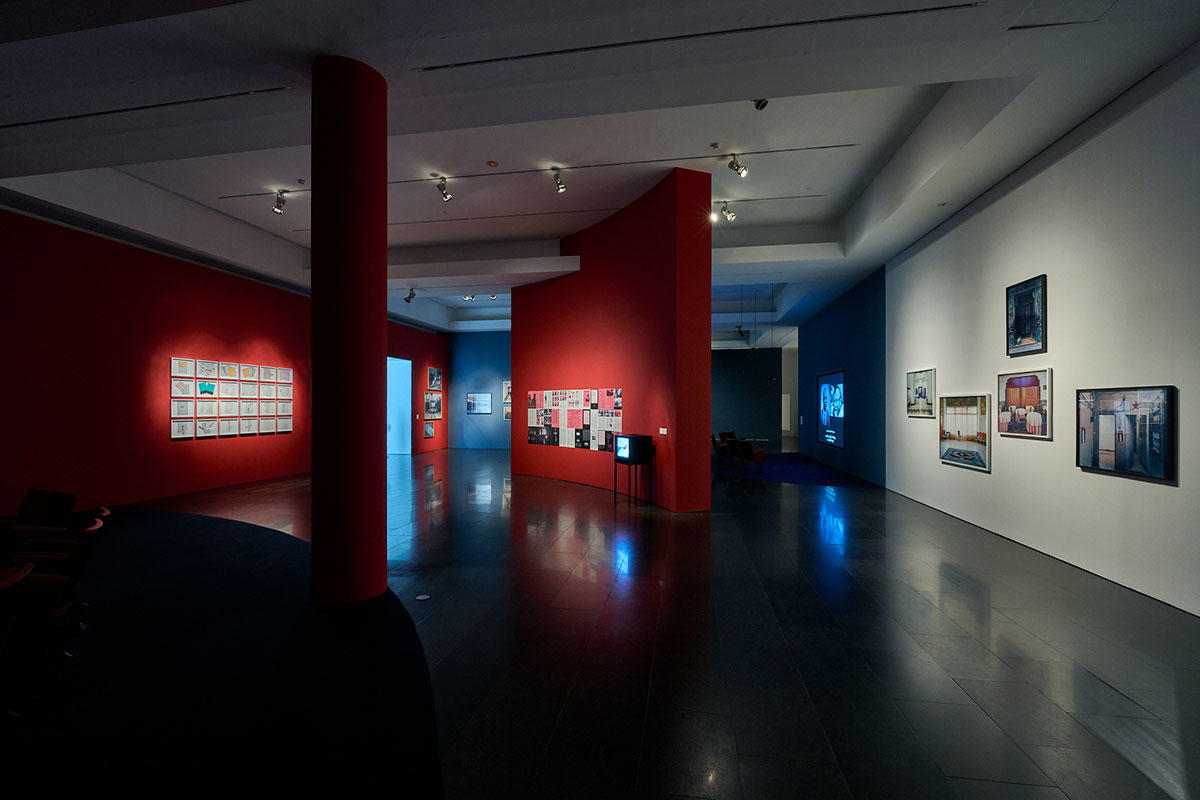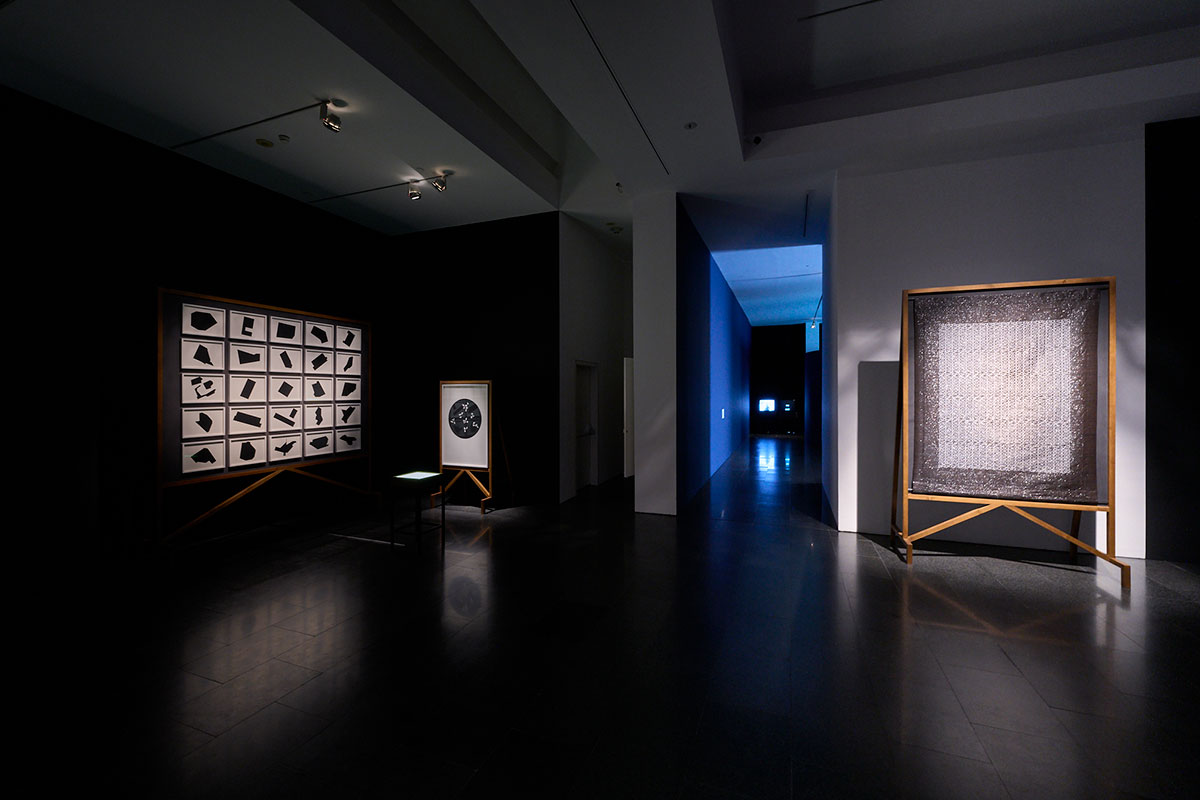PRESENTATION: Bouchra Khalili-Between Circles and Constellations
 “Who is a witness to history?” is one of the central questions that haunts Bouchra Khalili’s interdisciplinary practice. A way of working that explores modes of witnessing suppressed or undocumented history, interweaving first-person accounts, popular poetics and communal narratives. To approach her work, we must first understand how language and speech, and their relationship with oral traditions of storytelling, are the key tools for the production of postcolonial history.
“Who is a witness to history?” is one of the central questions that haunts Bouchra Khalili’s interdisciplinary practice. A way of working that explores modes of witnessing suppressed or undocumented history, interweaving first-person accounts, popular poetics and communal narratives. To approach her work, we must first understand how language and speech, and their relationship with oral traditions of storytelling, are the key tools for the production of postcolonial history.
By Dimitris Lempesis
Photo: MACBA Archive

Bouchra Khalili’s exhibition title, “Between Circles and Constellations”, refers to two essential aspects of Bouchra Khalili’s work. On the one hand, she recovers the notion of Al-Halqa, literally ‘the circle’, ‘the assembly’, a centuries-old tradition of storytelling in public spaces in Morocco, seen here as a metaphor for the search for political visibility characteristic of the protagonists of The Circle, actors and agents of their own history. The piece is the culmination of a research project undertaken by Khalili over the last ten years. At the same time, the exhibition invites viewers to become witnesses to such encounters and struggles through the superposition of narratives in Khalili’s work, an extraordinarily complex amalgam of multiple layers, genres and languages transmitting the memory of previously silenced, unacknowledged or undocumented communities. The exhibition brings together projects from the last decade of Khalili’s oeuvre, including film, video, installation, photography, objects, and prints. Bookended by “The Tempest Society” (2017) and “The Circle” (2023), two works that take inspiration from the legacy of the Movement of Arab Workers (MTA) in France in the 1970s, and their theatre groups. The exhibition itself is conceived as a constellation in which works are interconnected through their shared reflections on belonging and political agency, as well as through a compilation of key figures from history and postcolonial archives, who appear and reappear in the artist’s works as haunting ghosts. Set in Athens, “The Tempest Society” features Isavella, Elias and Giannis, three young Athenians from different backgrounds, who reflect on equality, democracy and their relationship to theatre as a civic space. They start from the legacy of the Parisian theatre group Al Assifa, composed of members of the MTA and French students who addressed the daily struggles against inequality and racism and were active between 1972–78. Drawing upon the filmmaker Pier Paolo Pasolini’s notion of the ‘civic poet’, Al Assifa’s forgotten heritage is contemplated against the backdrop of the economic and humanitarian crisis of contemporary Greece through the first-person accounts of guest performers, all Athenians, excluded from the ‘right to have rights’.
Opposite the video is “The Constellations” Series (2011). Composed of eight silkscreen prints, each of the works transforms into constellations the tortuous forced illegal journeys recounted in the video installation “The Mapping Journey Project” (2008–11), a paradigmatic work by Khalili (not included in the exhibition). Used for centuries by sailors to locate themselves at sea, constellations are also visual translations of those life stories. In the eight silk-screen prints, sky and sea merge and conventional boundaries are erased. The tracing of individual paths emerges as a different mode of orientation to look at our world and its representation. In the next room are works that comprise “Foreign Office” (2015): a video, a series of 15 photographs, and one silkscreen print. The video features two young Algerians, Ines and Fadi, who recount Algiers’ forgotten past of post-independence between 1962–72 as an international hub for liberation movements from Africa, Asia and the Americas, including the International Section of the Black Panther Party (BPP). The photographs expose the current state of disrepair of what were once the headquarters of those organisations, in an exercise that subverts the traditional genre of architecture photography to unveil the hollow dissipation of the promises – mostly unfulfilled – of the independence era. The Archipelago is a mapping of the city that converts the architectural shapes of the buildings as seen from above into islands labelled with the acronyms of each organisation. In a clear allusion to Édouard Glissant’s Poetics of Relation, Khalili wonders whether the type of internationalism and solidarity that was prevalent in Algeria during those years could be the representation of the aesthetics of the notion of ‘Tout-Monde’ for which the Martinican poet hoped. The notion of solidarity is further explored in a series of works resulting from Khalili’s investigations into the French poet, essayist, novelist and playwright Jean Genet. “Twenty-Two Hours” (2018) is a video installation that focuses on Genet’s two-month stay in the U.S. at the invitation of the BPP. Quiana and Vanessa, two African American women, examine the traces left of Genet’s visit in support of the BPP. Taking place in the very same area where Genet delivered his first public speech in support for the Party, Quiana and Vanessa use the gesture of montage and the act of storytelling to form a historical constellation. Simultaneously, Doug Miranda, a prominent member of the BPP and former captain of the Party in Boston and New Haven, recounts memories of his encounters with Genet and meditates on his own commitment to the BPP. “Twenty-Two Hours” develops into a transgenerational conversation between Quiana, Vanessa and Doug around the transmission of history.
Featured alongside this work is “The Radical Ally” (2019), a mural publication that brings together the research from the making of Twenty-Two Hours. In addition, the series of photographs “A Small Suitcase” (2019), documents the ghostly presence of Genet’s suitcase – the only belonging he ever travelled with –, which was left unopened for nearly 40 years: letters, notebooks and notes on newspaper cut-outs, forming the workshop of Prisoner of Love, Genet’s posthumous memoir. In reference to the only trade that Genet learned, “The Typographer” (2019) is a short 16mm film transferred to video that shows the mounting and typesetting of the last sentence written by the author: ‘Put all the images in language in a place of safety and make use of them, for they are in the desert, and it’s in the desert we must go and look for them.’ Words that suggest a meditation on the position of the poet as a witness to history. The video trilogy “The Speeches Series” (2012–13) contemplates language, citizenship and labour. In chapter one, “Mother Tongue” (2012), five speakers of unwritten languages living in the suburbs of Paris chose, translated, memorised and perform fragments of major texts on contemporary culture by Aimé Césaire, Abdelkrim Al Khattabi, Malcolm X, Mahmoud Darwish, Édouard Glissant and Patrick Chamoiseau. Filmed in Genoa, the second chapter, “Word on the Streets” (2013), addresses notions of citizenship and belonging through original manifestos devised and performed by members of migrant communities. In the last chapter, “Living Labour” (2013), five undocumented workers living in New York perform their speeches on labour and its articulations with citizen membership. Together, the three chapters present singular positions progressively developing into a collective voice and agency.
The “Magic Lantern Project” (2022) is a mixed media installation (video installation, objects, silkscreen prints, tapestry) taking inspiration from phantasmagoria, a magic lantern performance combining projected imagery with storytelling. Invented by Robertson in the immediate aftermath of the French Revolution, this ‘spectrology’ served for public invocations of ghosts and, in particular, deceased figures of 1789 and Enlightenment philosophers so they could continue ‘to speak in public’. Khalili links this ‘spectrology’ to the birth of the Portapak, an invention in the mid-1960s that transformed the production of moving images. Encouraged by Jean Genet, Carole Roussopoulos quickly adopted this new technology to become a pioneer of feminist video making (as also seen in Foreign Office). Along with Genet, she travelled to Amman in September 1970 and filmed survivors of the massacres of Palestinian refugees by the army of King Hussein. The resulting video, “The Nero of Amman”, is now lost, erased by the deterioration of the film throughout its showing. In this visual metaphor, Khalili meditates on the power of the moving-image as a potential spectrology. Finally, a mixed media installation, “The Circle” (2023) continues and closes the investigation started with “The Tempest Society” into the MTA and its theatre groups Al Assifa and Al Halaka, focusing on the groups’ culmination with the candidacy of a member of Al Assifa to the 1974 French presidency. It is an exercise of visibilisation that aims to go beyond the limits of the aesthetics of theatre in favour of socio-political representation. “The Circle” shows Mia and Lucas, both based in Marseille and of Maghrebi descent, excavating this forgotten legacy of immigrant heritage. Simultaneously, surviving members of the MTA and its theatre groups re-enact excerpts from their performances. The project examines the possibility to overcome the invisibilisation of certain groups, fostering the representation of stories, once suppressed or unarchived, and their transmission in the public sphere. Upon exiting the exhibition galleries, a similar historical constellation is mirrored through music with album covers belonging to the collection of fellow artist and musician artist Youcef Rocé Kaminsky. Conceived by Khalili as a carte blanche extended to an admired colleague, Rocé shares his own constellation of music in relation to emancipatory ideas, with album covers of songs and music produced in solidarity with migrant groups and movements of liberation from Latin America, Asia, Africa, the Middle-East and Europe. Also on display here, are two photographs in tribute to Adolfo Kaminsky, Rocé’s father. The son of Russian immigrants in Argentina, Adolfo became a member of the French resistance and helped forge identification documents during the Second World War, saving the lives of thousands of Jews. After the war, using his profession as a photographer as a cover, Kaminsky went on to use his forgery skills to aid the Algerian independence struggle, opponents to the dictator Francisco Franco in Spain and Nelson Mandela’s African National Congress in South Africa, among other organisations. “Between Circles and Constellations” displays the multiple layers of Bouchra Khalili’s long-term research projects, eventually illuminating a meditation on the complex relationships between poetry, storytelling, performance, image-making and the position of the witness to history.
Photo: Bouchra Khalili, Between Circles and Constellations, Exhibition view MACBA-Barcelona, 2023, Courtesy the artist and MACBA
Info: Curators: Elvira Dyangani Ose and Hiuwai Chu, MACBA (Museu d’Art Contemporani de Barcelona), Plaça dels Àngels 1, Barcelona, Spain, Duration: 17/2-21/5/2023, Days & Hours: Mon & Wed-Fri 11:00-17:30, Sat 10:00-20:00, Sun 10:00-15:00, https://www.macba.cat/en

